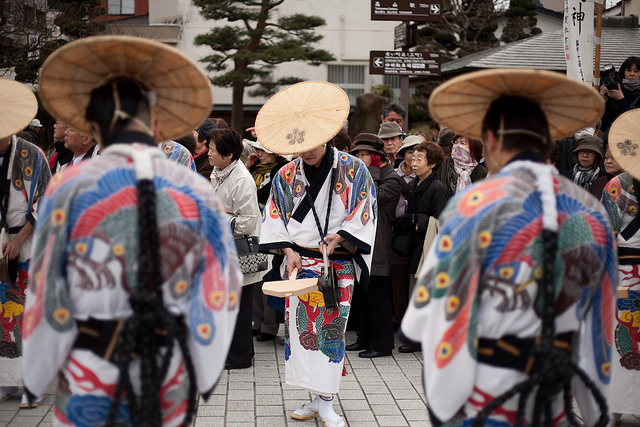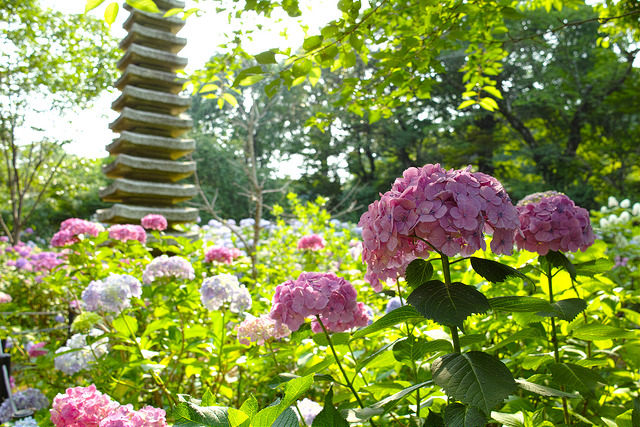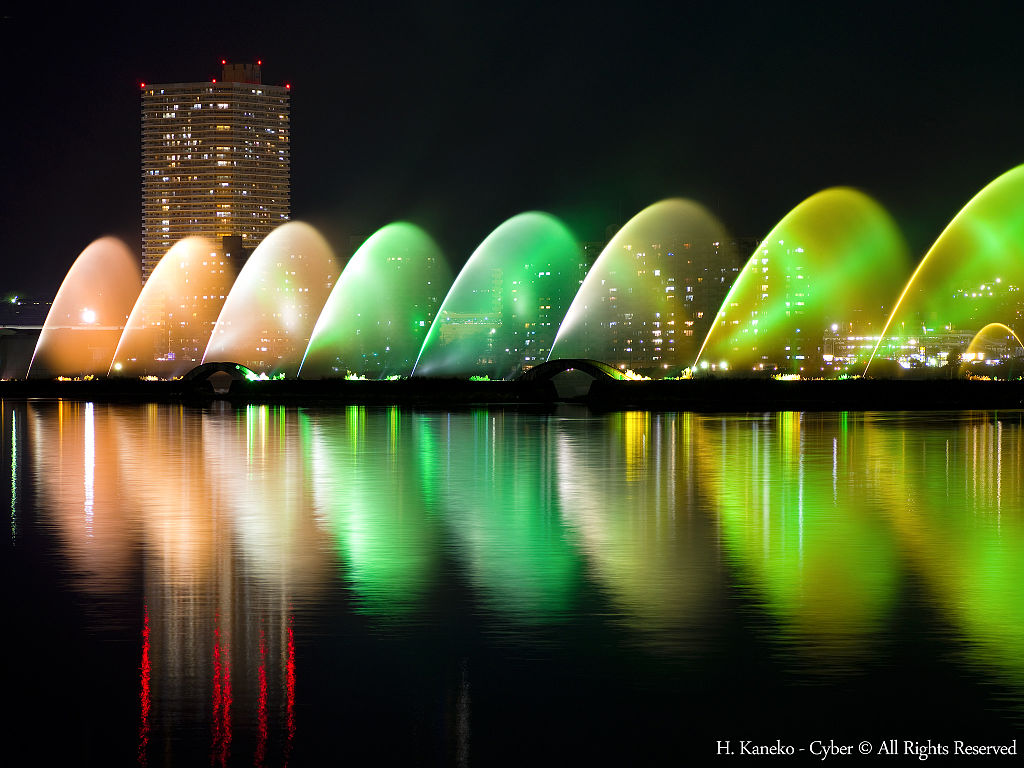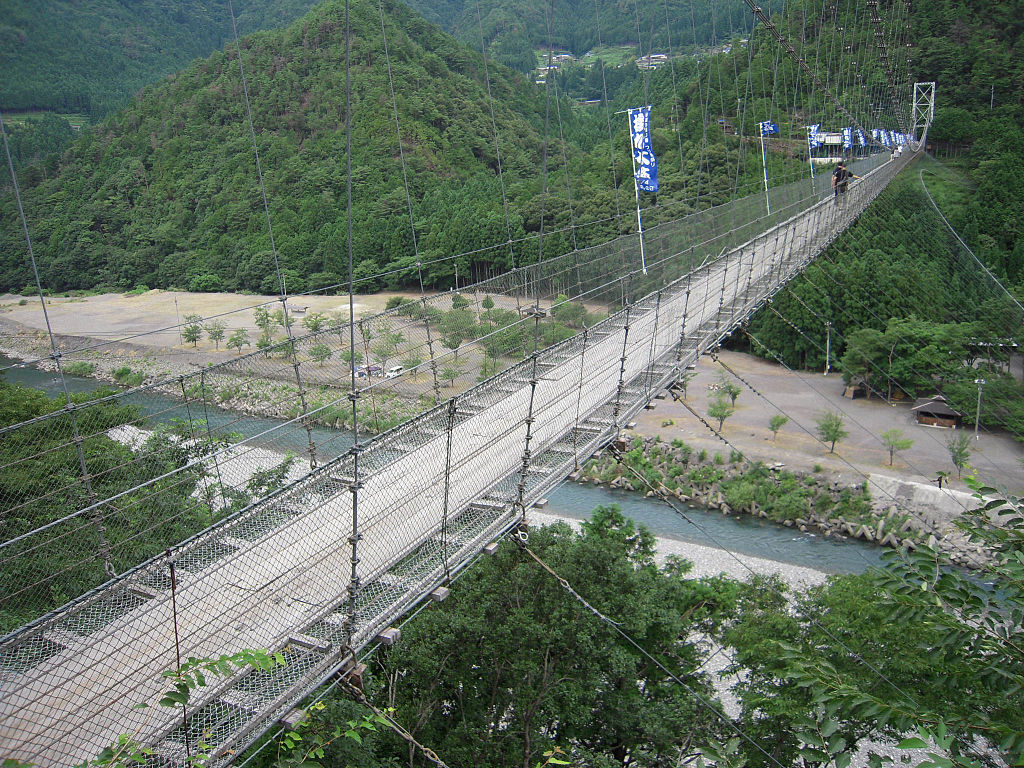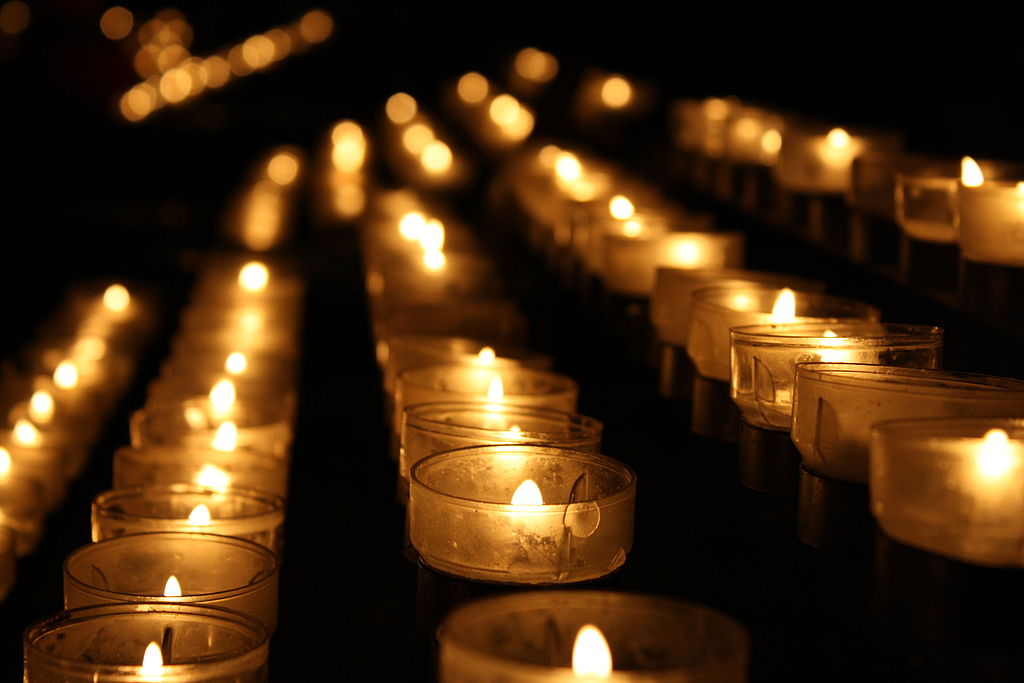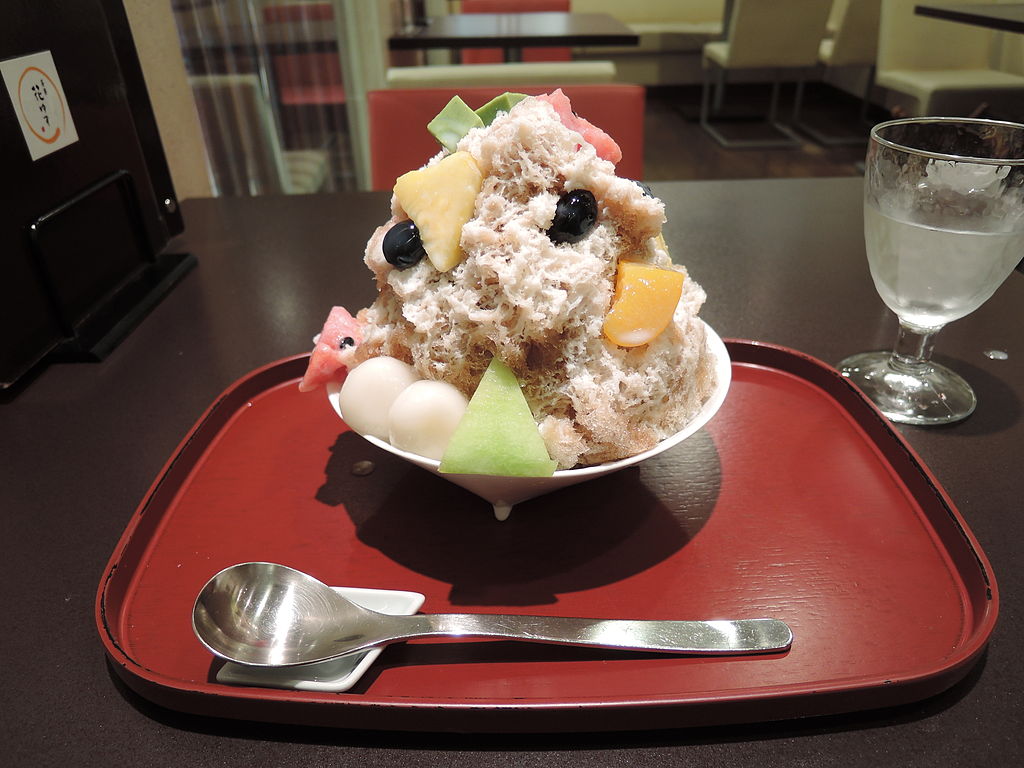May 31, 2017
Family Fun at Nagoya’s Kodomo Land

With the summer holidays fast approaching, its that time of the year when we start to think about how we can fill those long days with activities for our children.
Of course there is nothing wrong with kids just having fun, but surely when that fun is combined with education and growth, then all the better, right? Well, just such an experience can be found at the Todagawa Kodomo Land (Kid’s Land) in Nagoya’s Minato Ward.
Kodomo Land’s Play Area
Established in 1996, Todagawa Kodomo Land claims to be the largest child center in Nagoya. With a philosophy of encouraging children’s growth through play, it is packed with things for kids of all ages – though with a particular leaning towards younger children – to do.

The central park is an immense (as in absolutely huge!) play area and playhouse that has all sorts of activities such as a zip wire, climbing frames, swings and slides, scramble nets and innumerous other things for children to enjoy. Around the outer of the area there are peddling go-karts for larger children and even a small cycle monorail that is recommended for children aged 3 and up, accompanied by an adult (as long as they aren’t too concerned about heights, of course).
In the warmer months it is advisable that children bring bating costumes so that they can splash around in the paddling pool or get involved in all sorts of fun games in the small water park that includes a floating raft and water wheels, all conducive to play that is not only fun and energetic, but also requires kids to use their brains and work together.
Other things to do at Kodomo Land
Outside of the children’s area there is a large BBQ and picnic area. For the BBQ area it is best to call in advance to book a space, but the picnic area is free for all to use, and you can even bring your dog as long as it is kept on a lead.

As part of the Todagawa Greens initiative, it is coupled with an agricultural center and flower gardens, the former of which holds classes such as piano sing-and-dance-alongs for babies, unicycling, dodgem cars and batting centers (see website for details of when events are held). Outdoor activities include environmental and nature trail games.
However, while these activities are all provided, the intention is still for children to focus on making games for themselves, helping the imagination to grow as they do so too.
Volunteering at Kodomo Land
But Kodomo land is not just about little kids having fun, but also fostering a community and encouraging affection for children. With this in mind they ask for volunteers to help out with games and activities. Particularly they request that children of junior high and high school aged get involved, but adults are always welcome, making it a good chance for you to make friends with other parents, and give a little something back to the community.
Kodomo Land Details
- Where: Nagoya City Minato-ku, Harutado 1-3616 (map)
- Website: www.todagawa.jp
- Tel: 052-302-5321 for BBQ
- When: 9:00-18:00 April – September; 9:00-17:00 October – March; closed Mondays
- Admission: Free (a small fee may be charged for some attractions)

By Mark Guthrie
Images via http://www.todagawa.jp/ (modified) – Screengrabs
May 30, 2017
Ukiyo-e, The Japanese Art of Woodblock Painting

When one thinks of Japanese artwork, there is a good chance that the picture above, or one very much like it, is the one that springs to mind. There is a good reason for this. The art form of ukiyo-e, the style of painting using wooden block prints, has very much permeated every part of Japanese culture. Not only that, but as it was the predominant art form during the Edo period (1603-1868), a time when the country was sealed off from external influences, it is the first form of artwork that foreigners encountered when the fall of the bakufu saw the nation returned to the international community.
It is fair to say that ukiyo-e not only captures the imagination, but it is perhaps a direct antecedent from where the modern Japanese art scene springs.
History of Ukiyo-e
While today ukiyo-e is perhaps thought of as being in the realm of the highbrow, this was not always the case.
The term ‘ukiyo’ is one that conjures up ideas of the transient and fleeting world, and in the prosperous times of the newly peaceful Tokugawa era, this came to mean, ‘the floating world’, a place of joy, fun and, debauchery. The place where this hedonism was most prevalent was in the entertainment districts, and it is the characters who inhabited these areas that were the initial focus of this burgeoning genre, with the most popular productions being bijin-ga (prints of beautiful women) and yakusha-e (prints of kabuki actors).
As the art form progressed, what started out as what we might recognize as glamour periodicals and posters of today, with the term ukiyo-e again altering in meaning to be ‘current, modern style’, they began to reflect more everyday aspects and served as a combination of accessible magazines, as well as souvenirs purchased following a trip to the expanding capital of Edo. It was an art form for the masses.
What is Ukiyo-e
Ukiyo-e came out of the 15th century revival of the classical art form of yamato-e, with small figures and careful depictions of details of buildings and other objects. Yet, while this older genre often reflected past tales or narrative stories, the more modern ukio-e was set in the here and now, and this immediacy was reflected by the way it was produced.
[youtube https://www.youtube.com/watch?v=7pYQ7Ca5ax4]
In the early Edo period, ukiyo-e started as one-piece black-ink only woodblock prints, meaning that they could be easily created and distributed. Soon, as the genre grew in popularity, demand increased for colored prints, something that was achieved from the mid-18th century thanks to a rapid advance in technical development, with a procedure for adding color to the page using multiple woodblocks coming into practice, an example of which you can see in the above video.
In this way, to meet the ever increasing demand, ukiyo-e prints became the work of teams of artisans, with carvings being created from an artist’s design. Labour was divided into four groups: the publisher, who commissioned, promoted, and distributed the prints; the artists, who provided the design image; the woodcarvers, who prepared the woodblocks for printing; and the printers, who made impressions of the woodblocks on paper.
It was in this way that the art form was able to reach its increasing audience to such a great effect.
The great artists of ukiyo-e
Harunobu (1725-1720)
Perhaps the primary innovator of the genre, it was Harunobu who brought full color to the art form, thus rendering the previous three color printing style obsolete. Originally a talented, if not stand out artist, as a result of his social connections (his ancestor had been a retainer of Tokugawa Ieyasu) his work began to spread through the upper orders, and soon his innovation began to establish itself.
In his later years his vibrant, full colored prints of beautiful women dressed in the latest fashions, engaged in various (sometimes sexual) activities of leisure, and his kabuki actors and characters drawn from the capital city’s everyday life saw him as being regarded as the master of ukiyo-e and was widely imitated.
Hokusai (ca. 1760-1849)

The Great Wave
Perhaps best known for pushing colored woodblock printing away from the entertainment districts and into landscapes, Hokusai is particularly well celebrated for his Thirty-Six Views of Mt Fuji, with the print ‘The Great Wave’ (above) renowned both at home and abroad. His dalliances into the erotic ‘shunga’ genre, are particularly infamous, especially his image ‘The Dream of the Fisherman’s Wife‘ depicting an ‘ama’ female diver involved in a sexual entwinement with a pair of octopuses.
The influence of Hokusai in the West can be seen in the works of Degas, Monet, Gauguin and Whistler, as well as in the development of Art Nouveau in Europe.
Hiroshige (1797-1858)

Night Snow
Hiroshige, unlike most ukiyo-e artists who tended to focus on the beautiful women of the entertainment districts, is best known for his landscapes, such as the series The Fifty-three Stations of the Tōkaidō and The Sixty-nine Stations of the Kiso Kaidō; and for his depictions of birds and flowers.
These prints proved immensely popular among the capital’s growing urban and affluent population as tourism and travel became prime activities of leisure for the Edo middle classes, particularly amongst merchants.
Utagawa Kunisada (1786-1865)
If Hiroshige was bringing ukiyo into the rural sector, Kunisada was very firmly within the back streets of the pleasure districts.
While much of his art was of the beautiful women and kabuki stars of the day, he was always very much at the vanguard of his time, continuously developing his style, not adhering to stylistic constraints set by any of his contemporaries. It was this ability to both predict and move with fashions and phases that made him one of the most commercially and financially successful artist of his time.
It is perhaps due to this commercial outlook that he has been derided for his work in western media, with some critics denigrating his pursuit of fame over artistic valor.
Utagawa Kuniyoshi (1797-1861)

Takiyasha the Witch and the Skeleton Spectre
One designer who was considered to be at the highest end of his art was Utagawa Kuniyoshi. Perhaps something akin to the punk rocker of the ukiyo-e world, Kuniyoshi often covered kabuki actors and beautiful women in his work, but it is his depictions of mythical creatures, historical samurai battles, and cats that really make him stand out.
Having fallen on hard times, a chance meeting with the vastly more successful, yet equally less able Kunisada caused him to redouble his efforts, expanding his artistic style into heroic triptychs. His warrior prints were interesting in that they depicted legendary figures with an added stress on dreams, ghostly apparitions, omens, and superhuman feats, thematic styles that satisfied the public’s interest in the ghastly, exciting, and bizarre that was growing during the time.
Yoshitoshi (1839-1892)

Seiriki Tamigorō committing suicide
Widely considered the last great master of the ukiyo-e genre Yoshitoshi is also regarded as one of the form’s greatest innovators. His career spanned two eras – the last years of Edo period Japan, and the first years of modern Japan following the Meiji Restoration
Many of Yoshitoshi’s prints of the 1860s are depictions of graphic violence and death as Japan experienced the breakdown of the feudal system imposed by the Tokugawa shogunate. Yoshitoshi began making violent sketches, eventually incorporated into battle prints designed in a bloody and extravagant style which not only gave him a notoriety, but also captured the public’s imagination at the time.
Later, after a time in the commercial doldrums Yoshitoshi returned to infamy with a series of bijin-ga that caused him political trouble as it depicted female attendants to the Imperial court, identifying them by name. It may be that the Empress Meiji herself was displeased with the style of her portrait in the series.
Mark Guthrie
Image by Tōshūsai Sharaku (Own work) [Public Domain], via wikipedia.com (modified)
Image by Suzuki Harunobu (Own work) [Public Domain], via wikipedia.com (modified)
Image by Katsushika Hokusai (Own work) [Public Domain], via wikipedia.com (modified)
Image by Katsushika Hokusai (Own work) [Public Domain], via wikipedia.com (modified)
Image by Hiroshige (Own work) [Public Domain], via wikipedia.com (modified)
Image by Kunisada (Own work) [Public Domain], via wikipedia.com (modified)
Image by Utagawa (Own work) [Public Domain], via wikipedia.com (modified)
Image by Yoshitoshi (Own work) [Public Domain], via wikipedia.com (modified)
May 30, 2017
Sanno Matsuri, One of Tokyo’s Three Most Important Festivals
When it comes to festivals (matsuri), nothing can quite beat Japan in the summer. Pretty much every town and city will have one, and Tokyo, being the cultural (and pretty much geographical) epicenter of the country, has more than its fair share.
One of the capital’s three most important matsuri – along with the Kanda Matsuri and Fukagawa Matsuri – is the Sanno Festival that takes place in June and is held in Chiyoda’s Hie Shrine.
History of the Sanno Matsuri
The Sanno Festival has auspicious beginnings going back to the early years of the Edo period, when Tokugawa Iemitsu (1604-1651), the third shogun of the Tokugawa dynasty and grandson of Tokugawa Ieyasu, worshipped at the festival (which at the time was known as Tenka Festival). Under the patronage of Iemitsu, the Sanno Matsuri became one of only three festivals that were allowed to enter Edo Castle (now part of the Tokyo Imperial Palace).
The Sanno Festival, with its close ties to the Tokugawa shogunate, quickly became one of the more popular festivals of Edo. However, with the collapse of the bakufu following the Meiji Restoration, and then the declassification of shrines coming with the US occupation, it has since declined in its pomp and ceremony. In spite of this it remains one of the three great Shinto festivals of Japan, and its draw has more to do with tradition than its size as it continues to be of great importance and an interesting glimpse into Japanese cultural history.
About Sanno Matsuri
The Sanno Matsuri takes place every year in mid-June, however its full pageantry and splendor is only seen on even years. The reason for this is said to have been a bakufu decree aimed at tempering the arguments and occasional violence that arose between the festival’s organizers and those in charge of the rival Kanda Matsuri (with the latter thus celebrating on odd years).
The festival takes place over eleven days with various activities on each day, however the main event on the even years is the parade that usually takes place on the Saturday. Here, around 300 people form a procession some 600m long dressed in traditional costume with musicians, portable ‘mikoshi’ shrines, dashi floats, and riders on horseback, all setting off from Hie Shrine at 8:00 in the morning. The parade gradually winds its way around the area, passing by the Yotsuya train station and Yasukuni Shrine. Before noon the the ensemble arrives at the Imperial Palace where it stops for about half an hour while the mikoshi are involved in religious ceremonies. The chief priest enters the palace to offer prayers to the imperial family, which is a rare honor afforded to the festival. From there the parade continues and returns to Hie shrine before 17:00.
Sanno Matsuri 2017
This year’s edition will unfortunately not feature the magnificent mikoshi, but is still packed with a whole raft of other events, including the chigo-gyoretsu (June 11, 13:00 and 14:00), a parade with children in ornamental dress wishing for growth and health. Another religious rite is chinowa-kuguri, a purification ritual that sees participants passing through a reed ring as they pray to have their sins purified .
The program also includes classical performing arts such as dance, an orchestra, and the Sanno-taiko drums. There are also displays of ‘ikebana’ Japanese flower arrangements, as well as special tables set up in the shrine gardens so that you can enjoy a cup of Japanese tea.
- Where: Hie Shrine, 2-10-5 Nagatacho, Chiyoda-ku (map)
- When: June 7 to 17, 2017. Check the schedule (Japanese) for details.
By Mark Guthrie
Image by ZiJing (Own work) [CC BY-SA 2.0], via flickr.com (modified)
Image by Yoshitoshi (Own work) [Public Domain], via wikipedia.com (modified)
Image by chriggy1 (Own work) [CC BY-SA 2.0], via flickr.com (modified)
Image by Claremont Colleges Digital Library (Own work) [CC BY-SA 2.0], via flickr.com (modified)
May 25, 2017
Hydrangea Walk in the Kobe City Forest Botanical Garden

The Kobe City Forest Botanical Garden, is a massive botanical garden and arboretum located near Mount Maya in Kobe, Japan. Despite its close proximity to the city, the “garden” is an oasis of nature where you can immerse yourself in the sights and sounds of the forest.
There are several hiking course options, all around an hour each to complete. From the trails you can view most of the garden’s collection of 1,200 trees and shrubs both native to Japan and those imported from the rest of the world. Their collection of cherry trees is especially popular, but other notable varieties include conifers, hydrangea, and rhododendrons.
The hydrangea is actually the city’s official flower, and the garden’s annual “Hydrangea Walk in the Forest” event is popular during the start of summer; when the hydrangea are in bloom. You can experience this from early June until early July, or about a month. There is a quiz rally and guided tours are conducted by the staff, though don’t expect English support for those!
Kobe City Forest Botanical Garden
651-1242 Hyogo Prefecture, Kobe, Kita Ward, 山田町上谷上長尾1−2
078-591-0253
www.kobe-park.or.jp (JP)
Image: flickr.com “DP1M1899“ by Hiroyuki Naito (CC BY-NC-SA 2.0)
May 23, 2017
Reach for the stars at Hiroshima’s Planetarium

Although the stars may be a little hard to see sometimes in the city with all the lights, you don’t have to head out to the country in order to find them. Instead, you can make your way to Hiroshima’s very own planetarium, which is located inside the Hiroshima Children’s Museum. For those kids (and big kids, aka adults) who enjoy learning about astronomy and the scientific world in general, this is the place to go.
The whole complex covers four floors with interactive displays and of course, the projection of the stars on the uppermost floor. Most people take the opportunity to look around the whole Museum first before making their way to the planetarium as it’s absolutely free. The planetarium itself though does incur a cost for high school students and over 65s (250 yen) and adults in general (510 yen). As children are free for the entire Museum and planetarium, it’s a great place for families. After you’ve finished, the park outside is a lovely spot to have lunch and to take some time out to relax before heading to your next activity.
The star projection shows are a great visual for kids and last 50 minutes. During the week they are held four times a day at 11am, 1, 2 and 3pm respectively and on the weekends there are additional shows at 10am and 4pm. The Museum does advise individuals who want to see the show that the 11am session during weekdays is often fully booked by school trips so to avoid disappointment one of the later shows is advised.
The planetarium is open every day from 9am until 5pm and is closed every Monday, the day after national holidays and between 29 December-January 3.
Best of all, the Museum and planetarium do hold special events over summer for tired parents… I mean bored, kids. The Japanese website is detailed and very informative but unfortunately the English version does little but give an outline of the opening hours and access. If your Japanese reading skills are lacking and you are really keen to find out more, my advice is to ask one of your Japanese friends to help you. Otherwise, simply turn up, have a look around and enjoy the experience.
If you’re using public transport, the easiest way is to take the streetcar to the Genbaku Dome (Hiroshima Peace Memorial Park and Atomic Bomb) stop. Cross the road to the old baseball stadium grounds and head around to the left of it. You’ll see a large brick building with fun kid-related signs and a domed roof where the planetarium is located. There are also plenty of kid-inspired signs so you literally can’t miss it.
Have fun and reach for the stars!
Hiroshima Children’s Museum
5-83 Motomachi, Naka Ward, Hiroshima City, Hiroshima, 730-0011, Japan (MAP)
TEL : 082-222-5346
http://www.pyonta.city.hiroshima.jp (Japanese)
http://www.pyonta.city.hiroshima.jp/english/index.html (English)
Photo by ja:User:Taisyo [GFDL or CC-BY-SA-3.0], via Wikimedia Commons
May 23, 2017
Toukasan Festival: Hiroshima’s Official Start of Summer

Toukasan (とうかさん) is not only the biggest festival in Hiroshima, but also one of the oldest of the summer festivals in the whole of Japan. Dating back some 400 years, the three-day festival is the event the highlights the fact that summer has officially begun.
Held every June on the first weekend, the event revolves around yukata, the less-formal kind of kimono that is worn in the warmer months. The main street of Hondori is full of young men and women dressed in yukata enjoying the weather before rainy season begins. Yukata for men are fairly simple and straightforward, but the young girls and women really go all out and often plan their outfits as far back as March.
The streets are full of the usual matsuri or festival food stalls called yatai and although it is tradition to dress up, many people simply stop in after work dressed in their usual business or casual gear.
Yukata are much cheaper than kimono and new, full sets (complete with shoes) are as cheap as 3000-4000 yen. If you’re looking for something cheaper, check out places like Book-Off or other second-hand clothing shops where you can often find a really good deal. You can also get your yukata fitted at many of the shops in Hondori for as little as 500 yen if you really have no clue how to put it on. Then again, I’m sure any of your Japanese friends would also be more than willing to help!
To be honest, although people of any age do go, it’s predominantly a young people’s festival. If you don’t like crowds but still want to see what it’s all about, my advice is to go during the day. The stalls open around 12pm and you can spend all afternoon walking and eating before the students and workers arrive after work. The number of people increases greatly after dark and you will find yourself almost unable to do anything but shuffle along.
The actual meaning behind the festival centres on the kanji, ‘Touka’, which is another reading for the Shinto god Inari, the god of prosperity. Many people visit Enryuji, sometimes simply referred to as, ‘Toukasan,’ the temple located on Chuo-dori just across from the 7-Eleven. Then again, many people don’t and simply enjoy the food and festivities.
Whatever your idea of fun, whether food, worship or just people watching, Toukasan has something for you. Dress up or don’t dress up, just make sure you stop in at some point on the first weekend in June to enjoy the start of summer.
Tokasan Festival 2017
Friday June 2, 3, 4 2017
Enryuji Temple Mikawacho, Naka Ward, Hiroshima, Hiroshima Prefecture (map)
And nearby Chuo Dori Avenue
www.toukasan.jp (JP)
Photo: flickr.com “とうかさん (Toukasan)” by Spiegel (CC BY-SA 2.0)
May 23, 2017
Lake Biwa Summer Adventures

As the largest freshwater lake in all of Japan, Lake Biwa is no stranger to tourism. Especially as the weather warms up and the days grow longer, residents and visitors alike flock to this natural wonderland for a fun and relaxing escape from civilization. Located in the Shiga Prefecture, northeast of the old capital, this lake is day-trip distance from all over Kansai. Of course you can indulge in some of the famous beachside resorts like the luxurious Ōmi-Maiko, but with 235.2 meters of shore length and 258.8 square miles in area, there are countless ways you can spend your day at the lake. We’ve rounded up a list of some of our favorite ways to pass the days in the sunshine here. Whether it’s on the shores, in the air or on the waves, Lake Biwa truly has something for everyone.
Water Sports
What’s a lake without water sports? If you’re more on the adventurous side, why not check out some of these awesome tour options to get out on the water and get your adrenaline pumping!
Kayak Lake Biwa
One of the most popular sports on the lake, for those of you who don’t mind getting a little wet, is kayaking! There are various tours you can book from half-day adventures to multi-day tours with sunrise barbeques. Check out these tour companies to book your next Biwa boating adventure!
General water sports and tourism info: https://en.biwako-visitors.jp/spot/detail/89
Multi-day kayak tour: https://www.kkday.com/en/product/3423
Roll Across the Lake in a Water Ball
Ever seen those giant, inflated balls people can move atop the water in? Ever wanted to give it a go yourself? You’re in luck! One of the many water sport companies on Lake Biwa offers visitors the chance to try out the strange and wildly entertaining sport for themselves!
Book your water ball tour here: https://www.govoyagin.com/activities/japan-shiga-discover-lake-biwa-in-the-ball/2102
Bass Fishing
For many people, a day at Japan’s most famous lake would be incomplete without interacting with the abundant animal and wildlife species that live there. If fishing is your preferred sport, there are many options to cast your line in the bass-filled waters of Lake Biwa. If you don’t have your own gear and don’t want to worry about securing a permit, why not give one of the fishing tour companies a try?
Truth Fishing Guide Service: http://www.truth-biwako.com/english/
Zipline Tour
If testing the waters seems too standard for your lake agenda, there’s always the option to go aerial. Put your fear of heights aside for a zipline adventure like no other. Speed through the trees and above the water for a ride you’ll surely never forget!
Book your zipline tour here:
https://www.govoyagin.com/activities/japan-shiga-embark-on-a-zipline-adventure-at-lake
By Hiroaki Kaneko (琵琶湖の噴水のアート(Fountain art on Lake Biwa)) [CC BY-SA 2.0], via Wikimedia Commons
May 23, 2017
Take a Dip in Nara’s Water Holes this Summer

Looking to get outside as the summer season heats up? Although there are many places throughout Kansai to explore, checking out some of the region’s natural water spots might be in your best interest, especially as those temperatures rise! Of course the beaches lining Osaka Bay are worth a visit or two, but heading further inland is also a beautiful option for outdoor swimming! Nara is home to a multitude of natural water spots just begging for you to take a day trip to. How about checking out these two exciting rivers to get you started?
Tenokawa River
Nestled in the southern portion of Nara prefecture, where a quarter of the land is set aside for the lush forests of Yoshino-Kumano National Park, you will find the crystal clear waters of the Tenokawa river. The central area is home to the famous Dorogawa river where you can enjoy the hot springs and/or bring home some of the sacred and pure ‘Goro Goro’ water. Beyond these popular springs, though, follow the Tenokawa River as it snakes through the gorgeous Kii mountain range to more secluded swimming options. The clear water cascades across river rocks in places shallow enough to wet your ankles or deep enough to plunge into from a nearby boulder. With many hills to hike, shrines to visit, and waterfalls to admire, this river system is one you shouldn’t pass up this summer.
Where: Tenkawa, Yoshino District, Nara Prefecture
Access: From Abenobashi station (Tennoji) take one of the limited express trains on the Kintetsu Yoshino line to Shimoichiguchi station. From there, take a Nara Kotsu bus for about one-hour to Tenkawa Kawai.
Totsugawa River
Amidst the surrounding mountain giants of Mt. Tamaki, Onoyama, and Omoriyama in the southern tip of Nara bordering Mie and Wakayama, you’ll find the cool rushing waters of the Totsugawa river. Once you arrive at the lush river’s edge, set up camp on one of the large boulders or along the sandy banks for a day of swimming and sunning! The waters here are calm and chilly, providing the perfect, tranquil escape from the blazing summer sun. Look up and enjoy the towering views of the green mountains beyond. If you’re feeling adventurous, take the short hike up to the Tanise no Tsuribashi bridge for a walk across the longest steel cable suspension bridge in the world! Built in 1954 as one of the first great post-WWII public works projects, this bridge spans 297.7 meters in length and towers 54 meters over the Totsugawa’s waters below. If you’re feeling like a burst of adrenaline, make crossing this bridge a part of your day trip to this iconic spot, the views are unparalleled and the experience is like none other!
Where: Tanise, Totsukawa-mura, Yoshino-gun, Nara Prefecture 637-1106
Access: Take the JR Kisei line to Shingu station. From there take a 90 minute bus ride to Totsugawa.
By Tamago Moffle [CC BY-SA 2.0], via Wikimedia Commons
May 23, 2017
The Meanings of Osaka’s One Million Candles Night

For two hours on Wednesday night June 7 all of the lights in the Umeda district of downtown Osaka will be switched off. Umeda is the city’s principle commercial core, noted for its skyscraper canyons and general hustle and bustle. It is not a place accustomed to being thrown into total darkness.
The occasion is One Million Candles Night, a time for the people of Osaka to take a break from the whirl of modern society and contemplate how our thirst for electricity threatens the planet. As candles illuminate the Osaka night two dual purposes are served: electricity is saved (some 3,000,000 kilowatts) and people can step back from their hectic lives and recharge their own spiritual power source.
The idea for Candle Nights in Japan does not, however, originate in the spiritual world but in the world of commerce. Kazuyoshi Fujita was born on a farm in Iwate Prefecture in 1947 and came of age in the time of student activism in the 1960s and 1970s. Fujita threw in with protests against war and over population before embarking on a typical corporate career path after school.
Fujita could never quite find his comfort zone in the typical capitalist world. He fell into studies of chemical-free vegetables, which were poor sellers due to insect damage. Fujita started practicing traditional farming practices, eschewing the pesticides and fertilizers common in industrial agriculture. He trucked his carefully-nurtured crops to an open-air market once a week and soon his products were popular enough for Fujita to give up his corporate job.
Fujita founded Daichi Wo Mamoru Kai Co. Ltd. in 1977 and pioneered the organic food movement in Japan. The company has been so successful that he has been able to indulge his passion for entrepreneurial activism. In the early 2000s Fujita established the Food Mileage Campaign to make consumers aware of the vast distances their food was traveling from field to table. In 2003 came Candle Night, a time to “turn off the lights and take it slow tonight.”
The first candle nights took place in Tokyo and have expanded vigorously across the country. With that growth the simple message of contemplation has expanded as well. Today’s candle nights, including Osaka’s, feature live entertainment and vendors selling environmentally friendly products. At the Umeda event will be installation artwork playing off the flickering candle lights. There will be ”Candle Corridors” and “Message Candles” laced among the festivities.
But while One Million Candles Night has come to be a symbol for raising environmental awareness, attendees (admission is free) are reminded to take a moment to reflect by oneself or with friends as the tens of thousands of candles set the contemplative mood. As the lights dim down consider the words of the founders…
Do something special . . .
Read a book with your child by candlelight.
Enjoy a quiet dinner with a special person.
This night can mean many things for many people.
A time to save energy, to think about peace,
to think about people in distant lands
who share our planet.
Pulling the plug opens the window to a new world.
Awakens us to human freedom and diversity.
It is a process of discovery about our potential.
However you spend them, for just two hours, join us.
Turning off the lights, and help us spread
a gentle wave of candlelight around the earth.
By Dennis Benkert (IMG_0482) [CC BY-SA 2.0], via Wikimedia Commons
May 23, 2017
Cool Down with Shaved Ice This Summer

If it is summer in Japan it is time for kakigori. Kakigori is the nation’s traditional hot weather treat – a mound of shaved ice sweetened with condensed milk and flavored with fruit or syrups. You can get your kakigori fix just about anywhere – in coffee shops, restaurants, at festivals, on street corners or in kakigori stores. Look for a ubiquitous red character that can be interpreted as whirring blades shaving ice (the blue region beneath); this is the symbol for kakigori.
Like many traditions in Japan, kakigori has a long history. There are accounts of shaved ice going back to the Heian period in the 11th century. To enjoy ice in the middle of summer meant cutting it in winter and storing it so kakigori was considered a luxury item that only nobles could afford to enjoy. A sharp knife was used to scrape the shavings into a metal bowl and sap from plants poured on top.
Kakigori for the masses arrived in the 1800s when merchant Kahe Nakagawa began transporting ice from Hakodate on the newly built railroad lines to supplement his butcher shop in Yokohama with sweets. The first kakigori shop opened for business in 1872. It did not take long for enterprising entrepreneurs to invent an automatic ice shaving machine to speed up the kakigori-making process.
It is the ice-making machine that is at the heart of kakigori. The shavings fall into piles more like freshly fallen snow than ice. The kakigori, in fact, is more like snow than the sno-cone that is popular in western countries. A sno-cone is much harsher than the smooth renderings from shaved-ice machines. In Japan these machines can be purchased to make home-made kakigori and you can still see some vendors hand-shaving large blocks of ice on Japan streets in the summer.
For those who believe that ice is ice, consider the fact that kakigori can also have snob appeal. Some sellers boast of the natural ice used in crafting the treat, none of that refrigerated water. Others even boast of their ice coming directly from the slopes of Mount Fuji.
Kakigori is popular enough to support entire chain operations. Ice Monster, based in Taiwan, crashed the shores of Japan with ice cafes (including in Osaka) in 2015 with its shaved-ice “Sensations.” Sulbing, with over 500 locations in Korea, is offering its own version of the summer treat.
Kakigori can be flavored with almost anything with seasonal summer fruit and green tea being the top choices. Kakigori is eaten with a spoon and brain freeze – that numbing sensation in your head when too much cold stimulation is consumed too quickly – is a real possibility. If this happens, press the cold bowl of shaved ice to your forehead; other kakigori lovers will recognize the symptoms and attempt at relief. Kakigori is meant to be savored slowly.
While you will want to indulge in shaved ice creations all summer long, the day of July 25 is one day you will certainly want to grab your kakigori spoon. That is the day the Japan Kakigori Association has declared to be “The Day of Kakigori” since the Japanese pronunciation of the date sounds a lot like “summer ice.”
By Mixtures (Own work) [CC BY 3.0], via Wikimedia Commons




